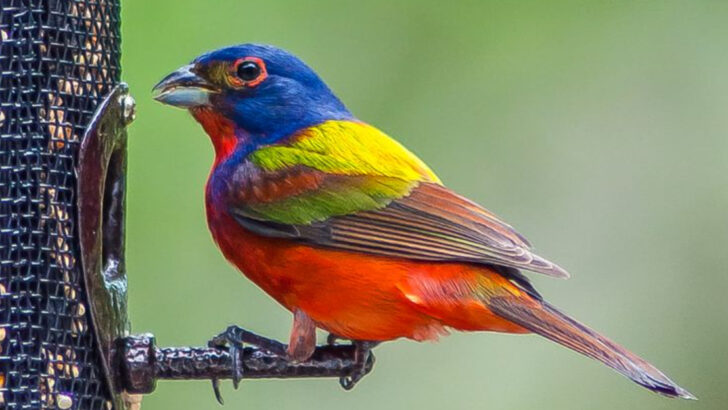Some birds make you stop and stare.
Their colors flash like jewels, their feathers shimmer in the sunlight, and their presence turns any moment into pure magic. America is home to some of the most breathtaking birds on the planet, each one a tiny masterpiece of nature.
From the dazzling Scarlet Tanager to the regal Bald Eagle, these winged wonders are scattered across forests, deserts, and coastlines, just waiting to be admired. Some are bold and brilliant, others subtle and elegant—but all of them are worth seeing at least once in your lifetime.
Get ready to meet 20 of the most stunning birds in America. Keep your binoculars close—you might just spot one in your own backyard!
Northern Cardinal
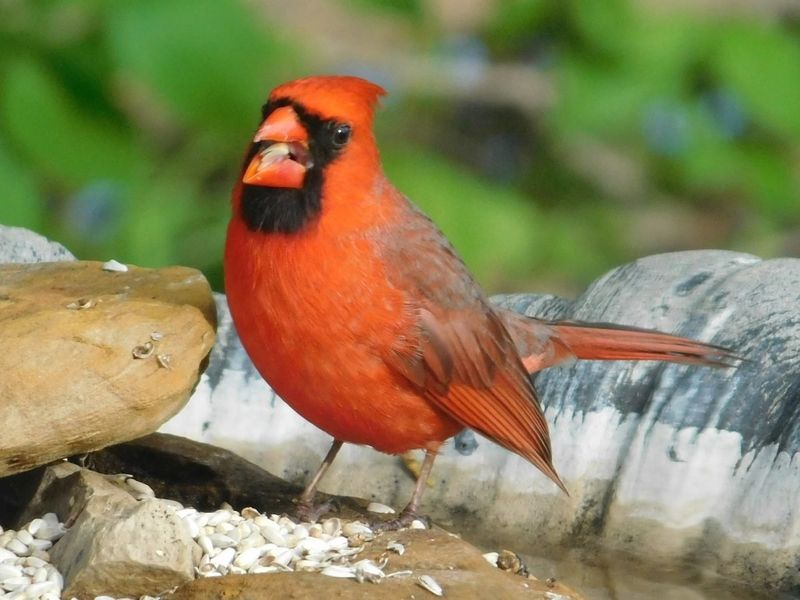
The Northern Cardinal is a true showstopper with its vivid red feathers and striking black mask. This bird is often found in backyards, especially during winter, when its bright color contrasts against the snow. Cardinals are monogamous, forming pairs that last their entire lives.
Their melodious song is a common sound in forests and suburban areas. Feeding predominantly on seeds, they are a favorite among birdwatchers. Spotting a cardinal perched on a snowy branch is a sight to cherish and a joy for any nature lover.
Bald Eagle
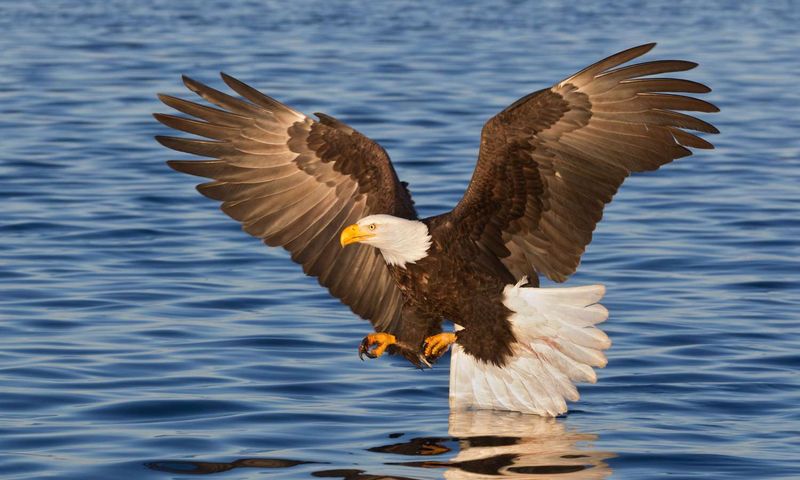
The Bald Eagle, a national symbol, is admired for its power and grace. With a wingspan of up to 7.5 feet, these birds are expert hunters, often seen swooping down to catch fish. Their nests, known as aeries, are massive and reused for years.
Found near large bodies of open water, they favor tall trees for nesting. The sight of a Bald Eagle soaring is a quintessential American experience. Conservation efforts have helped their populations recover, making them a success story of wildlife protection.
American Goldfinch
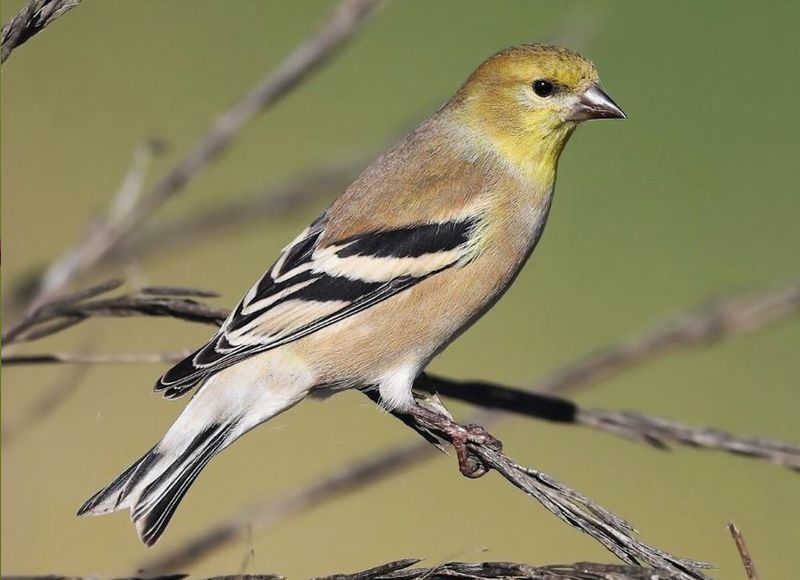
The American Goldfinch is known for its vibrant yellow feathers during the breeding season, creating a delightful splash of color. These small birds are social and often seen flitting about in fields and meadows.
Their diet consists mainly of seeds, particularly favoring thistle. Goldfinches are unique in their late nesting season, coinciding with the peak of seed availability. Their cheerful presence and acrobatic flight make them a joy to watch, enchanting everyone with their sunny disposition.
Blue Jay
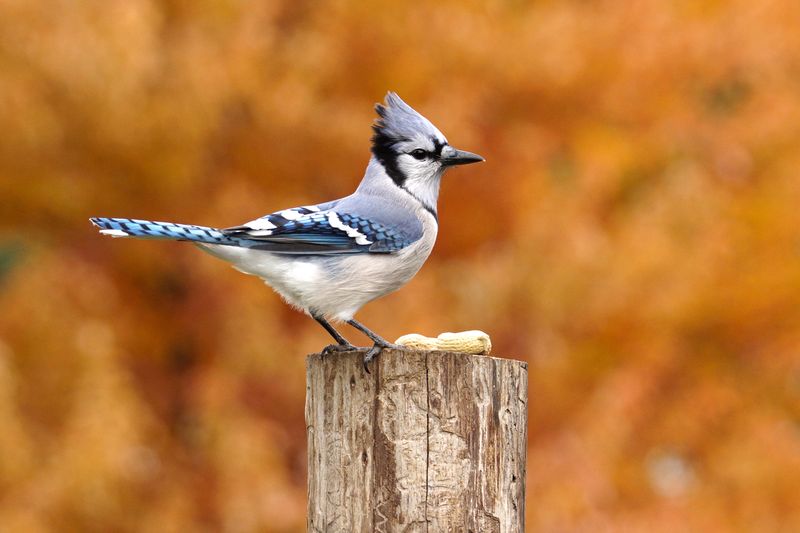
Blue Jays are known for their intelligence and complex social behaviors. With their vibrant blue and white plumage, they are easily recognizable and often seen in forests, gardens, and parks.
These birds are known to mimic the calls of hawks, perhaps to deceive other birds. Blue Jays are also excellent at caching food, storing it for later use. Their lively personalities and striking appearance make them a favorite among bird enthusiasts.
Ruby-throated Hummingbird
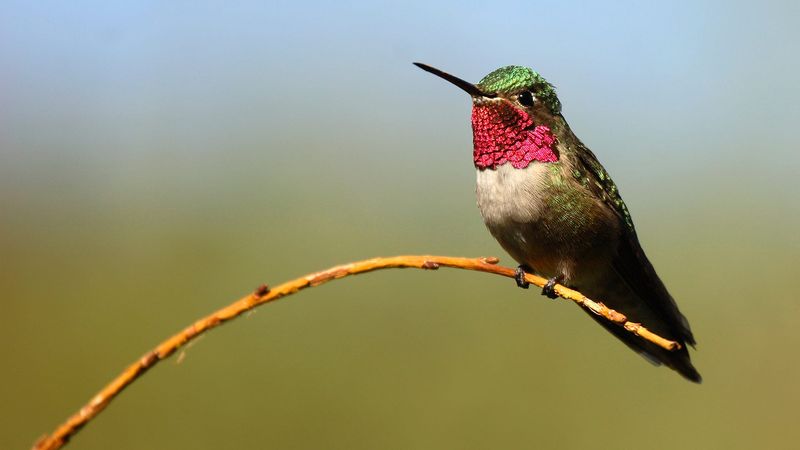
The Ruby-throated Hummingbird is a marvel of nature, known for its rapid wing beats and iridescent coloring. These tiny birds are the only hummingbirds that breed in Eastern North America.
Their incredible speed and agility are unmatched, and they are often seen darting from flower to flower, sipping nectar. With a journey that includes long migratory flights, sometimes over the Gulf of Mexico, these little wonders are true survivors, captivating all who witness their delicate beauty.
Great Egret
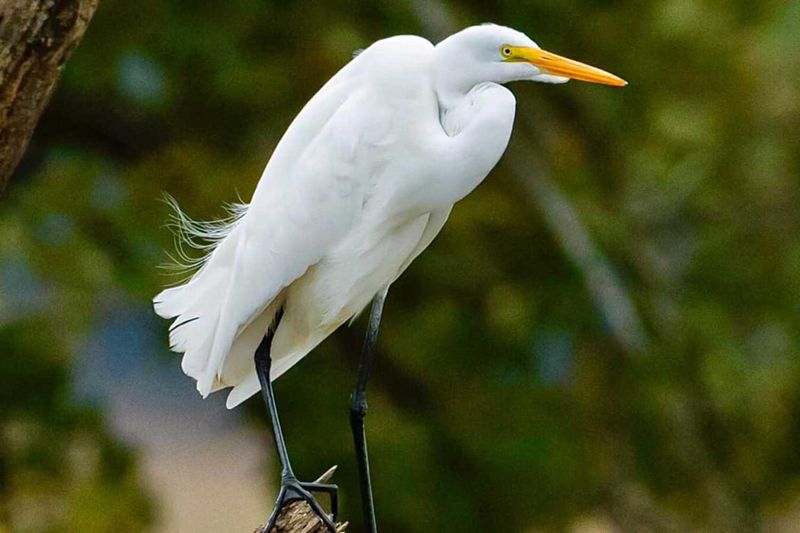
The Great Egret is an elegant bird, primarily found in wetlands and marshes. With its long neck and pure white feathers, it cuts a striking figure against the water. These birds are expert fishers, often seen standing still for long periods before striking at their prey.
Once hunted to near extinction for their plumes, Great Egrets have made a remarkable comeback thanks to conservation efforts. Their graceful presence in natural landscapes is a symbol of nature’s resilience and beauty.
Scarlet Tanager
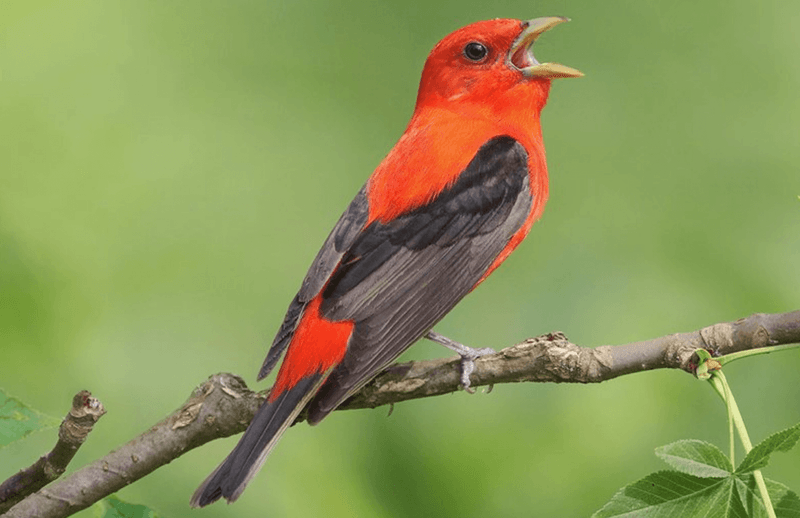
The Scarlet Tanager is a vibrant gem hidden within the forest canopy. The male’s brilliant red plumage and black wings make it a striking sight. These birds are often heard before they are seen, with their unique song echoing through the trees.
Primarily insectivorous, they play a vital role in controlling insect populations. During migration, they travel long distances to South America, showcasing their endurance. The Scarlet Tanager’s beauty is truly a treasure for those who spot it amidst the foliage.
Eastern Bluebird
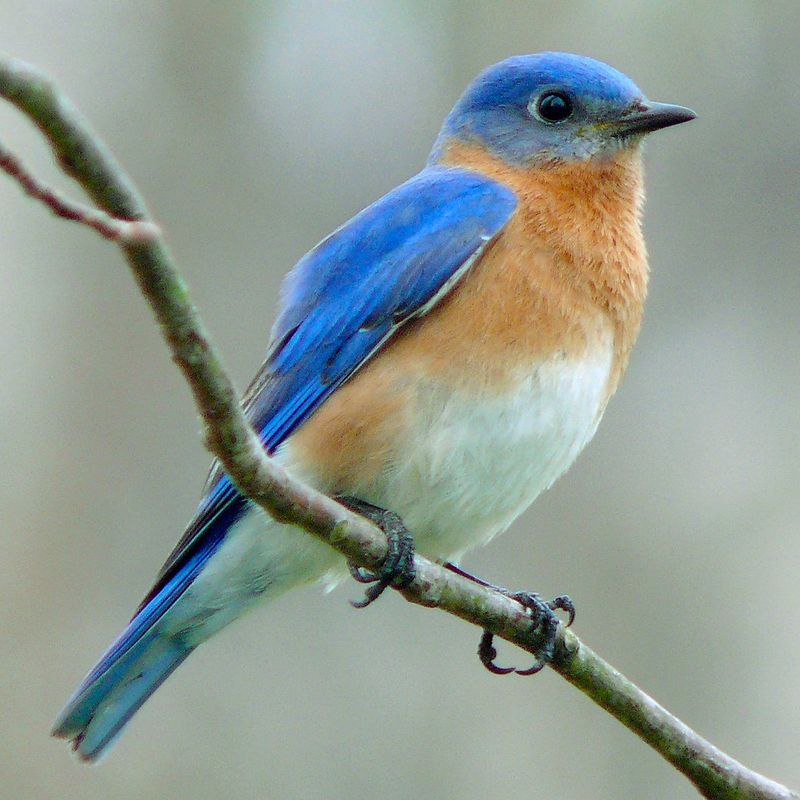
The Eastern Bluebird is a symbol of happiness and renewal, with its brilliant blue and rusty orange colors. Often found in open fields and meadows, these birds nest in cavities, making them reliant on nesting boxes in some areas.
They feed on insects and berries, contributing to pest control. Their soft, musical calls add charm to their lively presence. Conservation efforts, including providing nesting boxes, have helped their populations thrive, making the Eastern Bluebird a success story in wildlife management.
American Kestrel
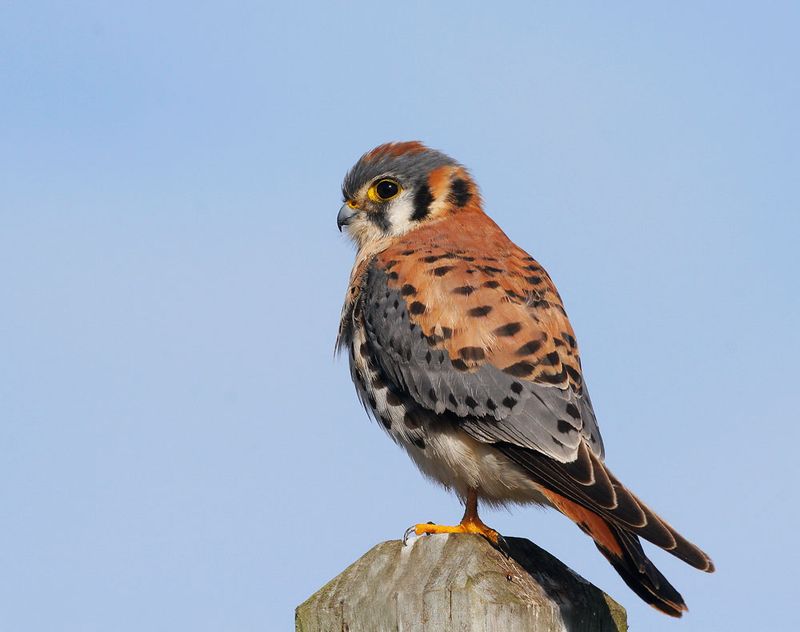
The American Kestrel is the smallest falcon in North America, yet it is a fierce predator. With its striking orange, blue, and black markings, this bird is a common sight in open fields and along roadsides.
Kestrels are skilled hunters, hovering in place before diving to catch insects and small mammals. They nest in cavities, often using man-made structures. Observing a kestrel’s hunting prowess is an exhilarating experience, showcasing the agility and precision of this petite raptor.
Peregrine Falcon
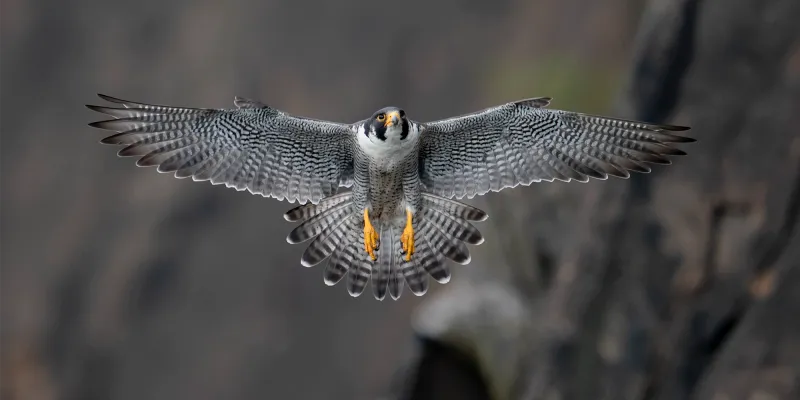
Renowned for its speed, the Peregrine Falcon is the fastest animal on the planet, reaching over 240 miles per hour during dives. Found in diverse habitats, they nest on cliff edges and skyscrapers alike.
Their hunting strategy involves high-speed pursuits of birds mid-air, showcasing their incredible agility. Conservation efforts have successfully reestablished peregrine populations in many areas. Watching a peregrine falcon in action is a testament to nature’s engineering marvel.
Snowy Owl
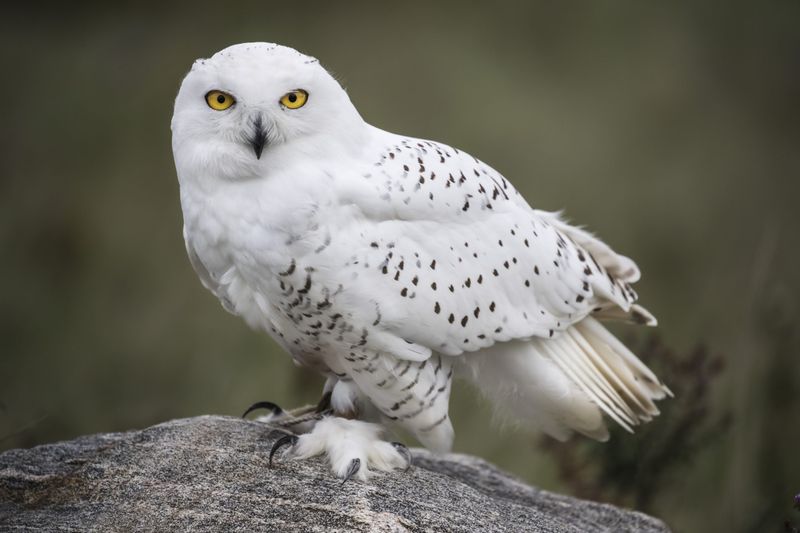
The Snowy Owl, with its pristine white feathers and piercing yellow eyes, is a majestic bird of the Arctic tundra. During winter, these owls migrate south, delighting birdwatchers with their presence.
They hunt during the day, a rarity among owls, often seen perched on open ground scanning for prey. Their silent flight and powerful hunting skills make them effective predators. The Snowy Owl’s grace and beauty are a winter highlight for many nature enthusiasts.
Wood Duck
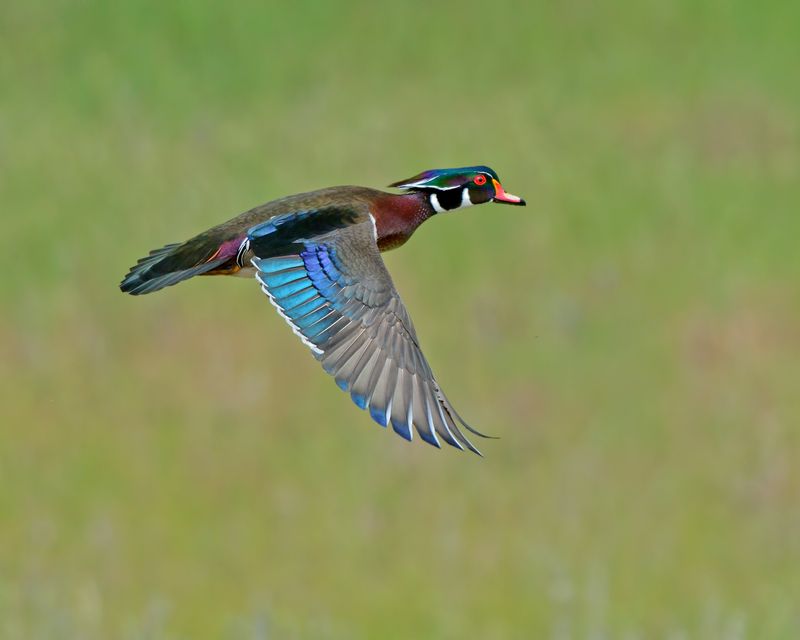
The Wood Duck is a visual masterpiece with its iridescent green and purple feathers, making it one of the most stunning waterfowl. Found in wooded swamps and marshes, they perch in trees and nest in cavities.
Males display vibrant colors during the breeding season, attracting attention with their striking appearance. These ducks are excellent swimmers and agile flyers, adding to their allure. Their beauty and adaptability make them a favorite among bird enthusiasts.
Baltimore Oriole
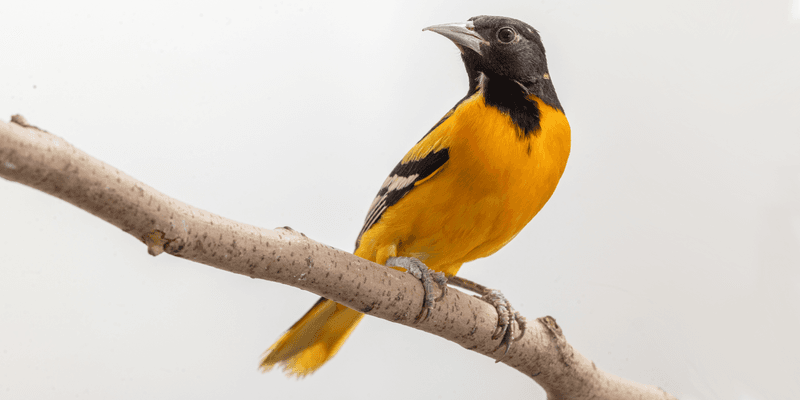
The Baltimore Oriole is a burst of color with its bright orange and black plumage. Found in open woodlands and gardens, these birds are known for their distinctive hanging nests.
They feed on insects and fruits, often seen sipping nectar from flowers. Orioles migrate long distances to Central and South America, showcasing their resilience. Their vibrant colors and melodic songs make them a delightful sight and sound during spring and summer.
Pileated Woodpecker
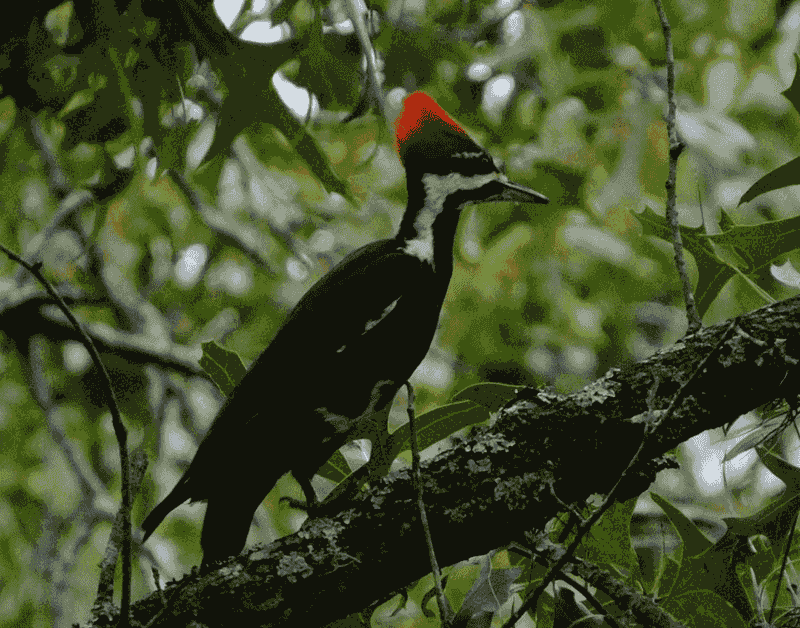
With its fiery red crest and impressive size, the Pileated Woodpecker is a standout in the bird world. Often heard before seen, their drumming on trees echoes through forests.
They excavate large holes in search of insects, playing a crucial role in forest ecosystems. Their presence indicates a healthy forest environment. Spotting this magnificent bird is a rewarding experience for anyone exploring North America’s woodlands.
Roseate Spoonbill
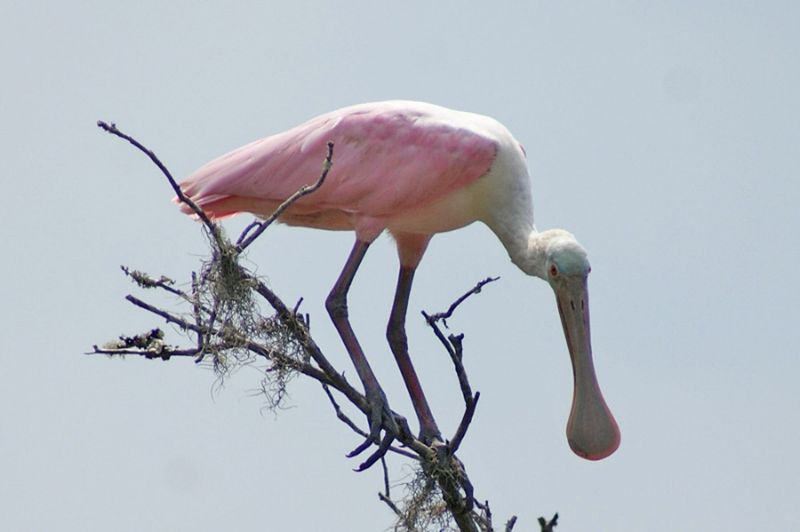
The Roseate Spoonbill captivates with its vibrant pink feathers and distinct spoon-shaped bill. Found in wetlands and marshes, these birds wade through water in search of food.
Their unique feeding technique involves sweeping their bills side-to-side to catch small aquatic creatures. Once hunted for their feathers, Roseate Spoonbills are now thriving due to conservation efforts. Their presence adds a splash of color and life to wetland areas.
American Avocet
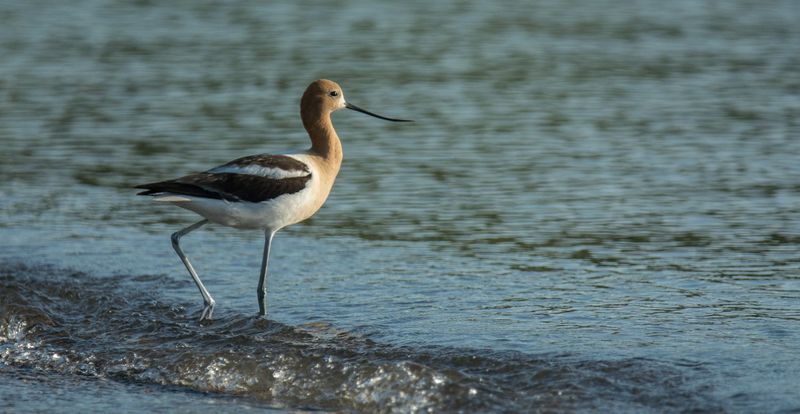
The American Avocet is a graceful wader with striking black and white plumage and a distinctive upturned bill. Found in shallow lakes and marshes, they are often seen in large flocks.
These birds feed by sweeping their bills side-to-side in the water, catching small invertebrates. Their striking appearance and elegant movements make them a favorite among birdwatchers and photographers alike, adding beauty to any landscape.
Cedar Waxwing
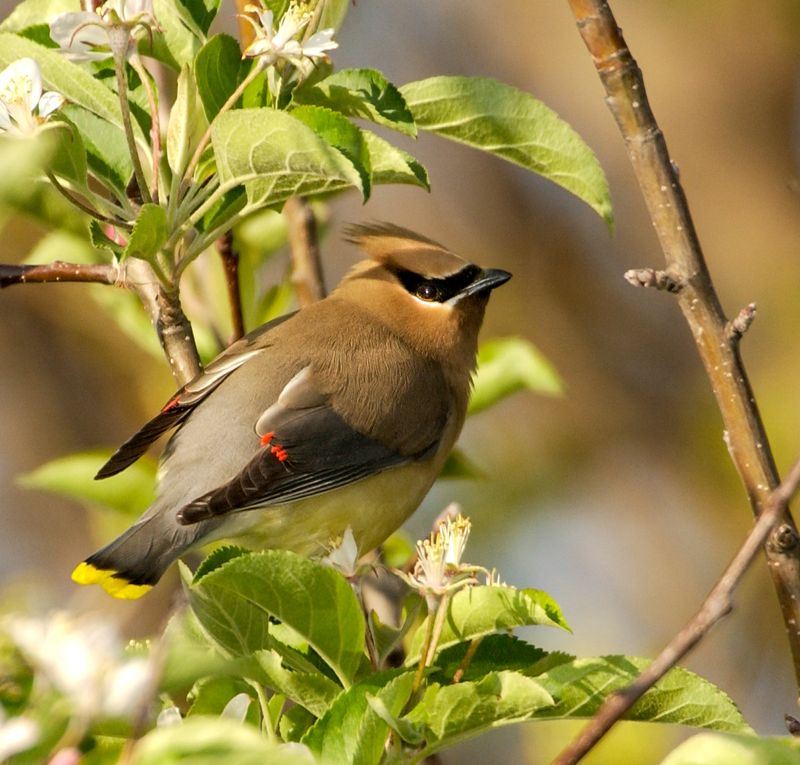
Cedar Waxwings are known for their sleek, silky feathers and distinctive black masks. These social birds often travel in flocks, feeding on berries and fruits.
Their love for fruit leads to fascinating feeding frenzies, especially during berry season. Cedar Waxwings are a joy to observe, with their elegant appearance and harmonious calls. Their presence in gardens and parks brings a touch of natural elegance to any setting.
Painted Bunting
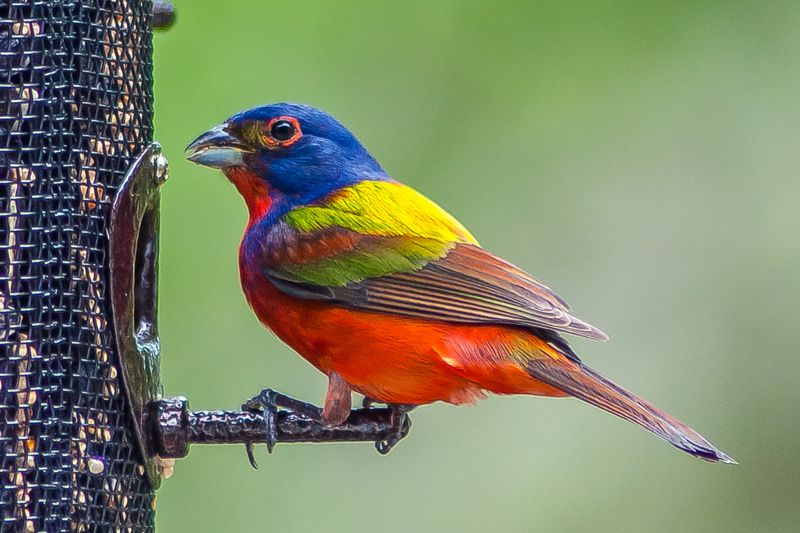
The Painted Bunting is often described as a rainbow in bird form. The males boast spectacular multicolored plumage, making them a sought-after sight in southern gardens and woodlands.
These shy birds are more often heard than seen, with a sweet, melodic song. During breeding season, their colors are most vivid, attracting birdwatchers from far and wide. The Painted Bunting’s stunning appearance and elusive nature make each sighting a treasured experience.
Western Tanager
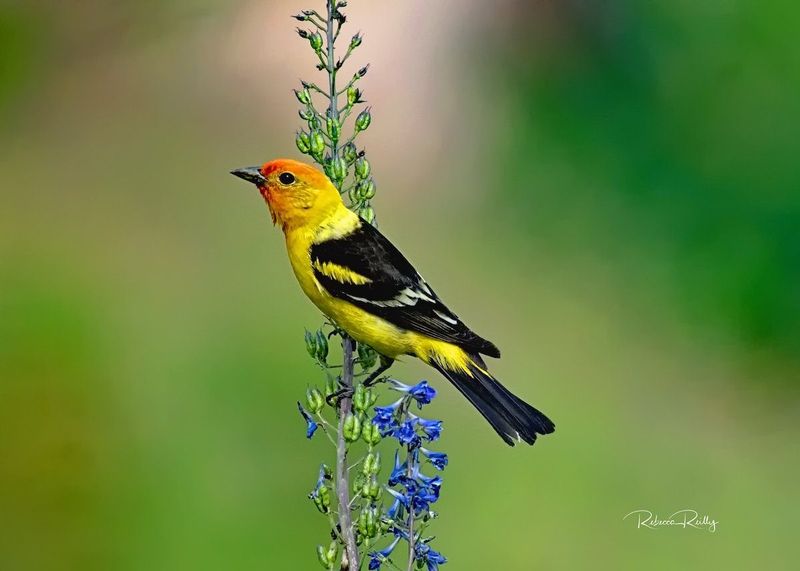
The Western Tanager is a dazzling bird with a bright yellow body and fiery red head. Found in coniferous forests, these birds are known for their vibrant colors and melodious songs.
They feed on insects and fruits, often seen flitting through the canopy. During migration, they travel vast distances, showcasing their endurance. The Western Tanager’s colorful presence adds a burst of brightness to the forest, delighting all who spot it.
Violet-crowned Woodnymph
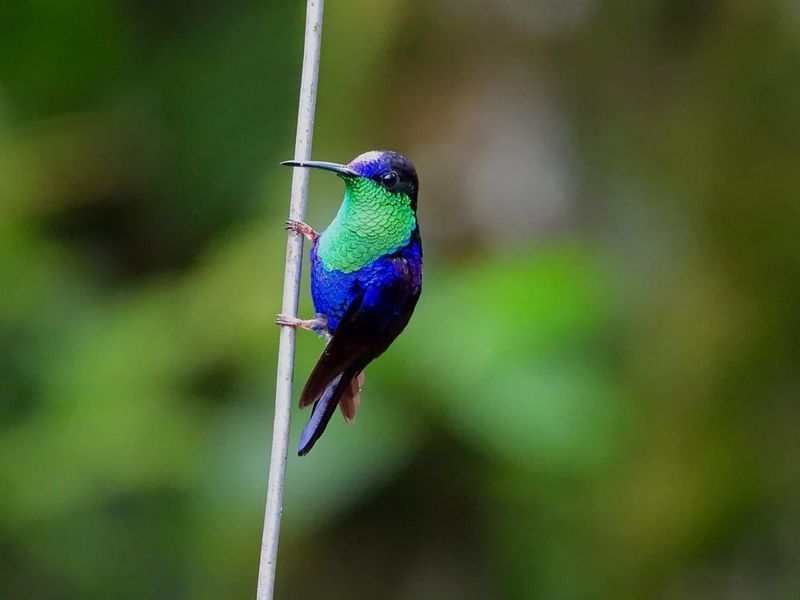
Meet the stunning Violet-crowned Woodnymph, a dazzling spectacle in the avian world. Known for its shimmering violet crown, this bird captivates all who glimpse its beauty. Its glittering green body contrasts marvelously with a striking blue belly, creating a visual masterpiece.
Typically found in the lush forests of Central and South America, this hummingbird’s vibrant plumes are a delight. It flits through the canopy with grace and speed, sipping nectar from tropical blossoms.
Bird enthusiasts adore the Woodnymph not just for its colors, but its lively personality. Observing one is an unforgettable experience.

